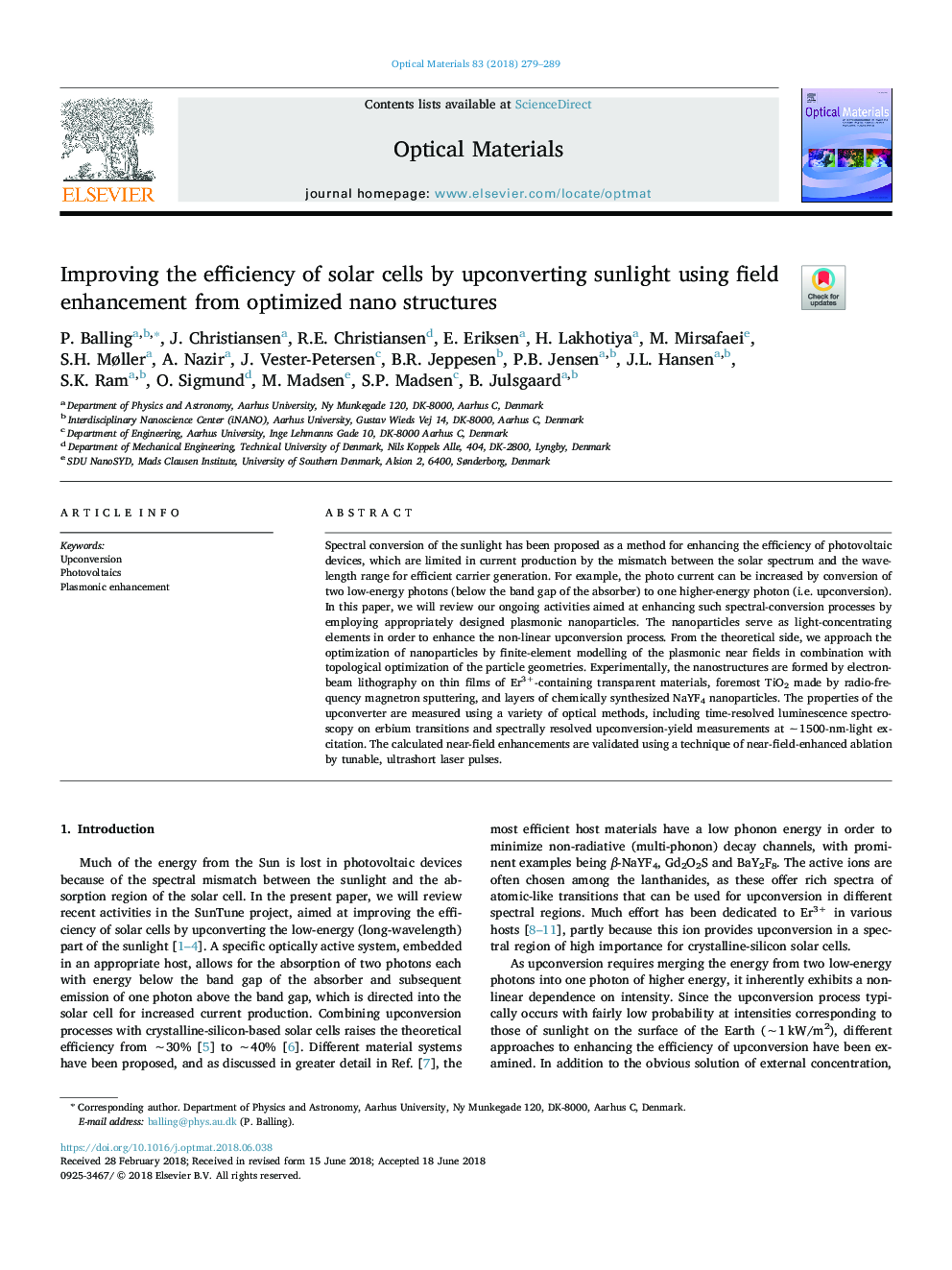| Article ID | Journal | Published Year | Pages | File Type |
|---|---|---|---|---|
| 7906436 | Optical Materials | 2018 | 11 Pages |
Abstract
Spectral conversion of the sunlight has been proposed as a method for enhancing the efficiency of photovoltaic devices, which are limited in current production by the mismatch between the solar spectrum and the wavelength range for efficient carrier generation. For example, the photo current can be increased by conversion of two low-energy photons (below the band gap of the absorber) to one higher-energy photon (i.e. upconversion). In this paper, we will review our ongoing activities aimed at enhancing such spectral-conversion processes by employing appropriately designed plasmonic nanoparticles. The nanoparticles serve as light-concentrating elements in order to enhance the non-linear upconversion process. From the theoretical side, we approach the optimization of nanoparticles by finite-element modelling of the plasmonic near fields in combination with topological optimization of the particle geometries. Experimentally, the nanostructures are formed by electron-beam lithography on thin films of Er3+-containing transparent materials, foremost TiO2 made by radio-frequency magnetron sputtering, and layers of chemically synthesized NaYF4 nanoparticles. The properties of the upconverter are measured using a variety of optical methods, including time-resolved luminescence spectroscopy on erbium transitions and spectrally resolved upconversion-yield measurements at â¼1500-nm-light excitation. The calculated near-field enhancements are validated using a technique of near-field-enhanced ablation by tunable, ultrashort laser pulses.
Related Topics
Physical Sciences and Engineering
Materials Science
Ceramics and Composites
Authors
P. Balling, J. Christiansen, R.E. Christiansen, E. Eriksen, H. Lakhotiya, M. Mirsafaei, S.H. Møller, A. Nazir, J. Vester-Petersen, B.R. Jeppesen, P.B. Jensen, J.L. Hansen, S.K. Ram, O. Sigmund, M. Madsen, S.P. Madsen, B. Julsgaard,
